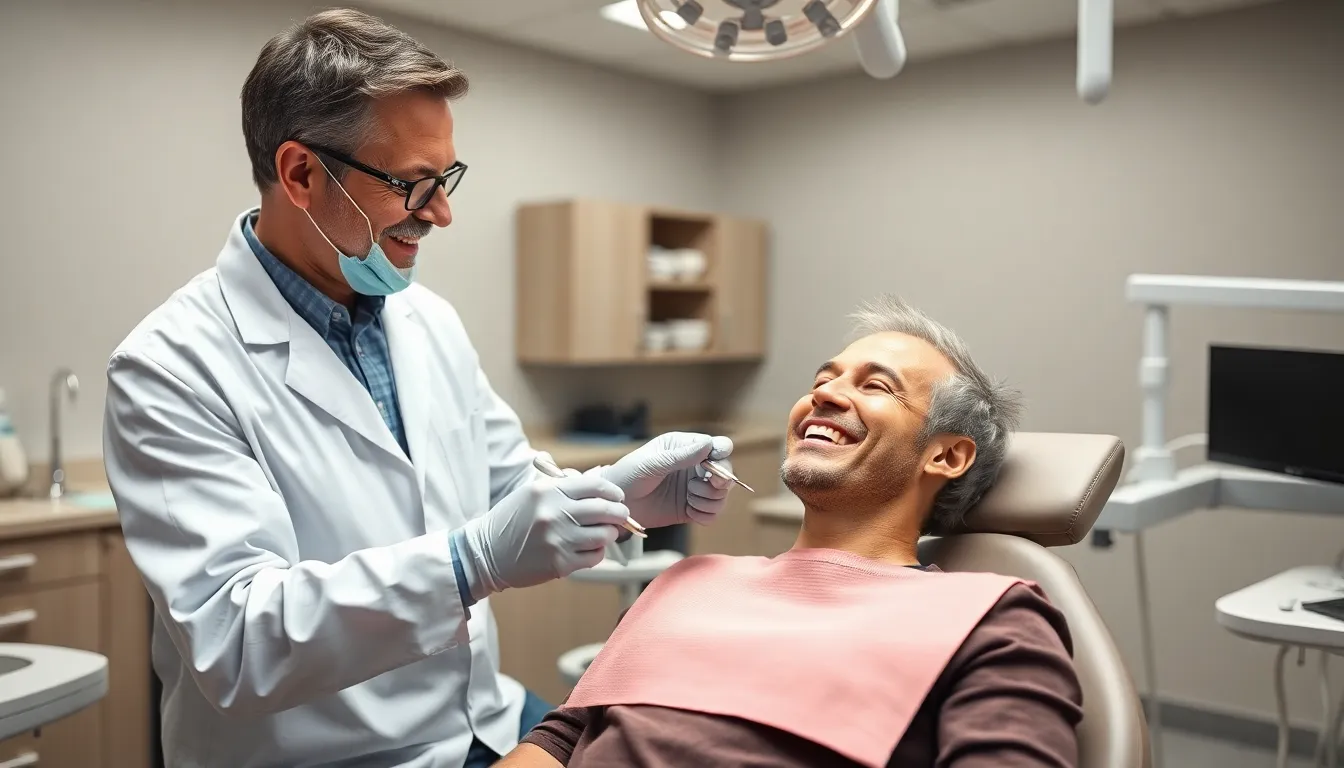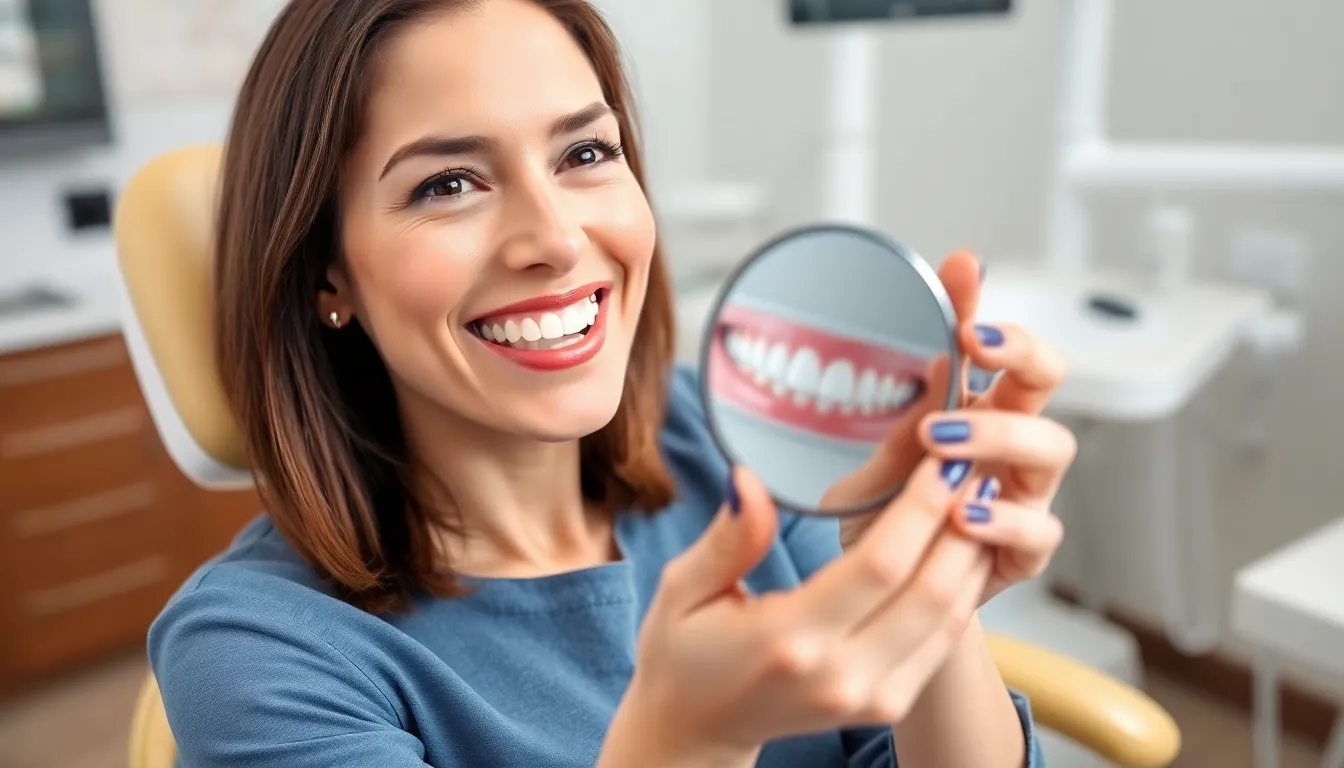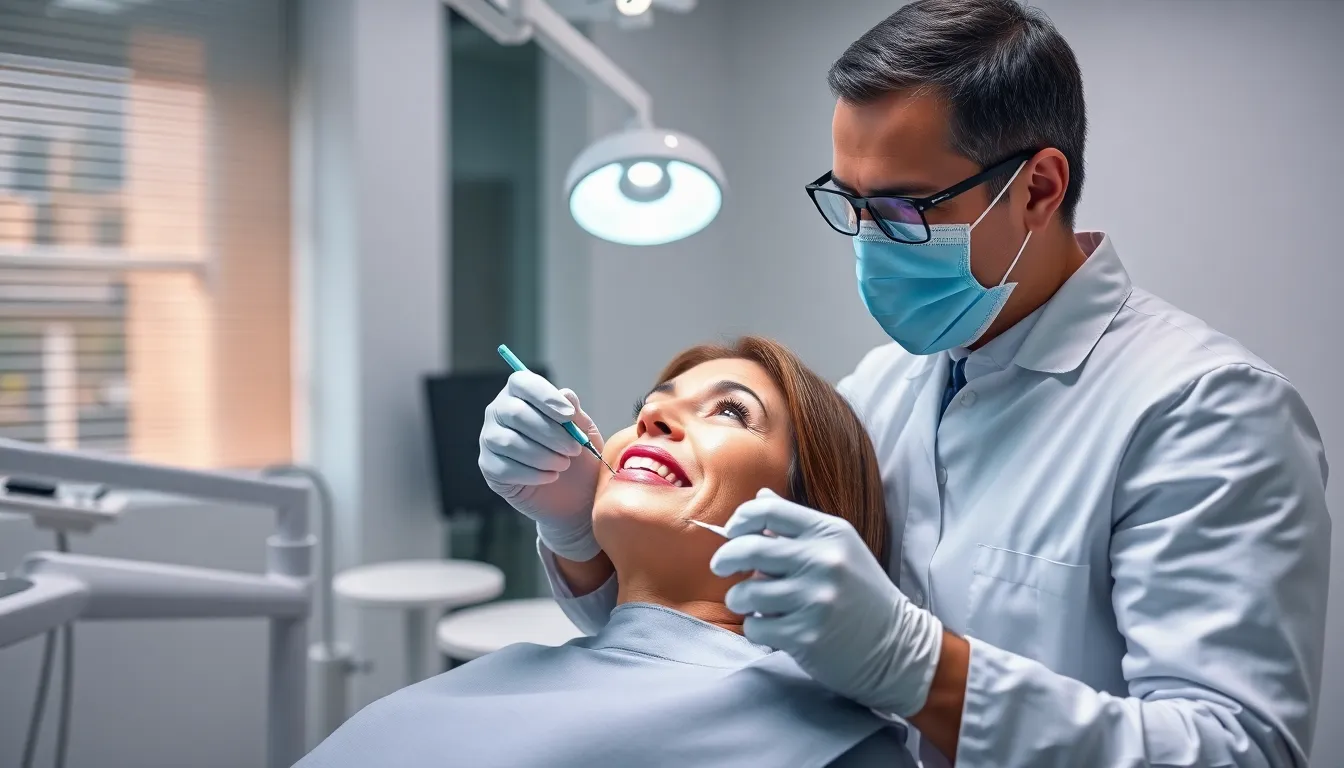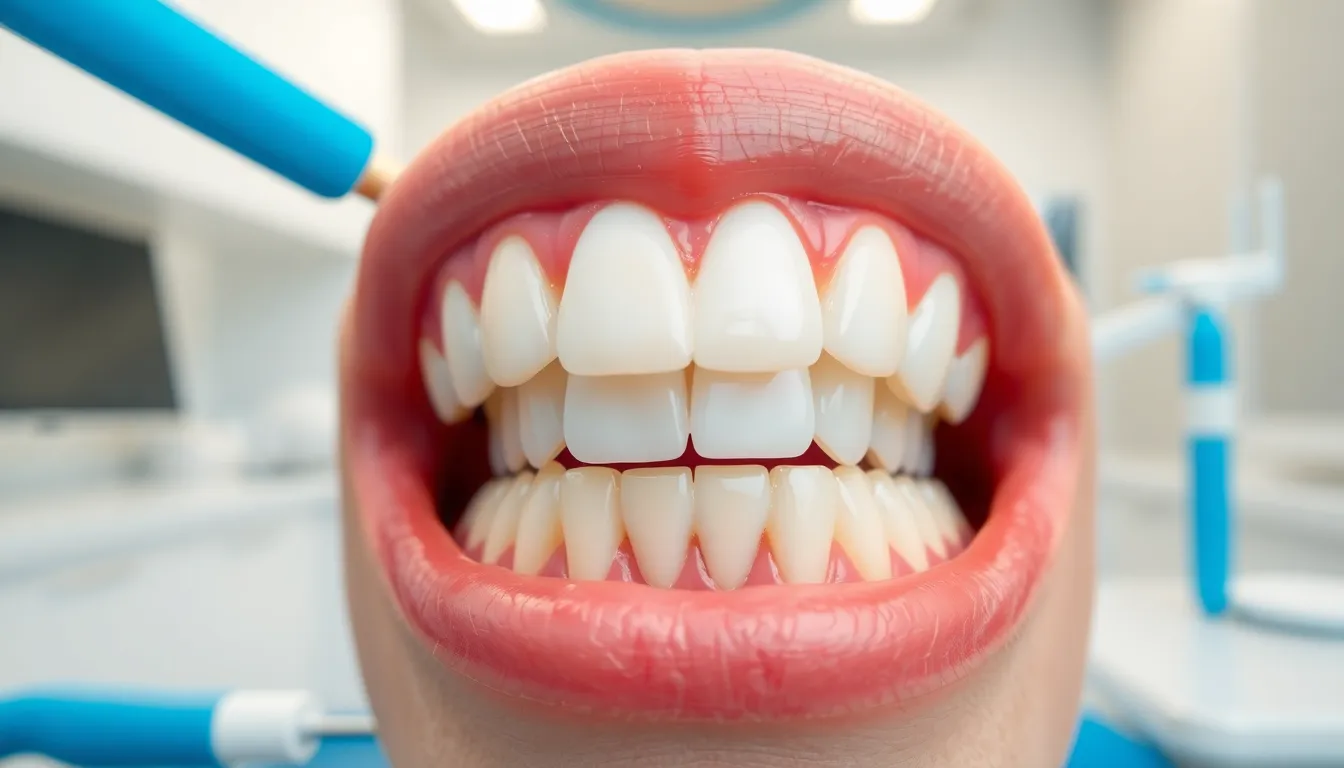Wondering how long teeth whitening takes to transform your smile? The timeline varies significantly depending on which method you choose, with results appearing anywhere from 30 minutes to several weeks.
You’ve probably noticed those dazzling white smiles on celebrities and wondered if you could achieve similar results without spending weeks on treatment. Whether you’re preparing for a special event or simply want to boost your confidence, understanding the time investment for different whitening methods is crucial. From professional in-office treatments that deliver instant results to at-home options that work gradually, the perfect whitening solution depends on your schedule, budget, and whitening goals.
Understanding Teeth Whitening: A Time Overview
Teeth whitening treatments vary significantly in duration, ranging from quick 30-minute procedures to extended regimens lasting several weeks. Professional in-office treatments typically deliver results in a single session of 60-90 minutes, making them ideal for patients seeking immediate improvements. Take-home trays prescribed by dentists generally require daily application for 30 minutes to 2 hours over 1-2 weeks for optimal results. Over-the-counter products like whitening strips need consistent use for 2-3 weeks before noticeable changes appear.
One of my patients, Sarah, came in panicking about her upcoming wedding just two weeks away. She’d been using drugstore whitening strips for a month with minimal results. We scheduled her for an in-office Zoom whitening treatment, and in just 90 minutes, she achieved the bright smile she’d been hoping for. Sarah’s experience perfectly illustrates the time difference between professional and over-the-counter options.
The type of staining affects treatment duration significantly. Extrinsic stains from coffee, tea, or tobacco respond quickly to whitening treatments, often showing improvement after the first application. Intrinsic stains caused by medications, fluorosis, or aging require longer treatment periods and sometimes multiple professional sessions. Your current tooth color also impacts timing—teeth with yellowish tones whiten faster than those with grayish or brownish discoloration.
Types of Teeth Whitening Procedures and Their Timeframes

Different teeth whitening methods require varying time commitments, with some delivering results in minutes while others take weeks. Each approach has distinct advantages and timeframes to consider when planning your smile transformation.
In-Office Professional Whitening
Professional whitening treatments at dental offices typically take between 30-90 minutes per session with immediate visible results. Laser teeth whitening sessions last about 90 minutes total, including consultation and three 20-minute whitening applications. Zoom® Whitening can brighten teeth by 7-8 shades in just over an hour, making it perfect for patients with time constraints. Opalescence® Boost offers another professional option with different potency levels and treatment durations customized to exact needs.
Dr. Harris notes, “Many of my patients are amazed by how quickly they see results with in-office treatments. Just last month, a business executive came in needing a confidence boost before a major presentation and left our office 60 minutes later with a noticeably brighter smile.”
At-Home Whitening Kits
At-home whitening systems require multiple applications over several days or weeks but offer flexibility in your whitening schedule. Some kits show results in as little as three nights, like Zoom! Take-Home Whitening, which averages six shades lighter in that timeframe and continues to improve with additional use. Studies indicate certain at-home systems may achieve better whitening outcomes immediately after complete treatment compared to some in-office products, though they take longer overall.
Lisa, a teacher who couldn’t take time off for an office visit, shared: “I used professional take-home trays for 30 minutes each night for two weeks. The gradual improvement fit perfectly with my busy schedule, and by day 10, my students were commenting on my brighter smile.”
Natural Whitening Methods
Natural techniques such as oil pulling, baking soda treatments, or activated charcoal applications generally require consistent use over weeks or months to see any noticeable difference. These methods work more slowly and less predictably than professional or at-home chemical treatments. Oil pulling involves swishing oil in your mouth for 15-20 minutes daily, while baking soda can be used as a weekly treatment mixed with water into a paste. Activated charcoal requires careful application for 2-3 minutes a few times weekly, with results potentially appearing after several weeks of consistent use.
Factors That Affect Whitening Duration

The time it takes to achieve your desired teeth whitening results depends on several key factors. Understanding these variables helps set realistic expectations for your whitening journey.
Initial Tooth Color and Stain Type
Your starting tooth color and the nature of your stains significantly impact whitening timeframes. Extrinsic stains—those caused by coffee, tea, wine, or tobacco—typically respond faster to whitening treatments than intrinsic stains. These surface-level discolorations can often show improvement after just one professional treatment session. Intrinsic stains, which develop inside the tooth from aging, trauma, or certain medications, are more stubborn and require longer treatment periods. Dr. Harris notes, “I’ve seen patients with coffee stains achieve their desired brightness in a single 60-minute session, while patients with tetracycline staining might need multiple treatments over several weeks for noticeable improvement.”
Age and Enamel Thickness
Your age and enamel condition play crucial roles in whitening effectiveness and duration. Younger teeth generally respond more quickly to whitening treatments due to thicker, healthier enamel. Older teeth or those with thinning enamel may take longer to whiten and can experience increased sensitivity during treatment. Enamel thickness varies naturally between individuals and diminishes over time through normal wear or excessive use of abrasive oral products. Michael, a 52-year-old patient, shared his experience: “I was surprised when Dr. Harris explained that my whitening treatment might take longer than my daughter’s. After adjusting my expectations, I was thrilled with my results after three weeks of using custom trays, while my daughter saw dramatic changes in just one week.”
Timeline Expectations: From Start to Finish

Different teeth whitening methods offer varying timelines from start to visible results. Your choice of whitening method significantly impacts how quickly you’ll see changes in your smile’s brightness.
In-Office Professional Whitening
Professional in-office whitening delivers the fastest results, typically taking just 30-60 minutes per session. Most patients experience dramatic whitening after a single appointment. Dr. Harris notes, “Many of my patients are amazed at the transformation they see in under an hour. One executive came in during his lunch break and returned to work with a noticeably brighter smile that his colleagues immediately commented on.”
At-Home Whitening Kits (Dentist-Provided)
Dentist-provided at-home kits require daily application for 10-14 days, with each session lasting 30-60 minutes. These professional-grade products start showing noticeable improvements around the 10-day mark, with full results appearing after completing the two-week treatment course.
Over-the-Counter Products
Store-bought whitening products contain lower concentrations of whitening agents compared to professional options. These products—including toothpastes, mouthwashes, and strips—produce gradual whitening over several weeks to months and primarily target surface stains rather than delivering dramatic whitening.
Natural and Home Remedies
DIY whitening methods like baking soda or activated charcoal show minimal improvement at best. These approaches might take several weeks to produce any visible effect, and results aren’t guaranteed or consistent.
Immediate Results vs. Gradual Improvement
In-office professional whitening provides immediate results within about an hour. Jennifer, a bride-to-be who visited Dr. Harris’s practice, shares: “I had my wedding in two days and was panicking about my smile. The in-office treatment transformed my teeth in just one hour—it was like magic compared to the strips I’d been using for weeks with little change.”
At-home professional kits deliver gradual improvement over approximately two weeks of consistent use. These kits strike a balance between convenience and effectiveness, with patients typically noticing progressive brightening with each application.
Over-the-counter products and natural remedies offer the slowest progression, with subtle changes appearing over weeks or months of regular use. These methods work incrementally and primarily address minor surface stains.
Maintenance and Touch-Up Requirements
Whitening results eventually fade due to dietary habits, smoking, or natural aging processes. Most patients require periodic maintenance to preserve their brighter smile.
In-office whitening patients might need occasional touch-up sessions, particularly for addressing stubborn stains that reappear. Dr. Harris recommends, “Many of my in-office whitening patients maintain their results with a quick 30-minute touch-up session every 6-12 months, depending on their lifestyle habits.”
At-home kits can be reused periodically when you notice slight dulling of your whitening results. This approach provides a cost-effective maintenance solution without requiring additional office visits.
Consistent oral hygiene practices and limiting consumption of staining substances like coffee, red wine, and tobacco significantly extend the longevity of your whitening results. Some patients who diligently follow these recommendations maintain their whitened smile for 12+ months before requiring touch-ups.
Potential Side Effects and Recovery Time

Common Side Effects
Teeth whitening procedures cause minimal discomfort for most patients. Temporary tooth sensitivity and mild gum irritation rank as the most frequently reported side effects after treatment. These sensations typically subside within a few days post-procedure, making them manageable for most individuals.
Dr. Todd B. Harris notes, “Many of my patients express concern about pain during whitening, but the reality is that modern techniques have significantly reduced discomfort. I reassure them that any sensitivity is usually short-lived and can be managed with desensitizing toothpaste.”
Certain people face higher risks of side effects, particularly those with:
- Pre-existing tooth sensitivity
- Gum disease or receding gums
- Worn tooth enamel
- Cracked teeth or exposed roots
“I remember treating Jennifer, a 35-year-old with naturally sensitive teeth,” shares Dr. Harris. “She was hesitant about professional whitening after a bad experience with over-the-counter strips. We used a gentler formula with her in-office treatment and recommended exact post-care products. Jennifer experienced only mild sensitivity for about 48 hours and was thrilled with her results.”
Recovery Process
Recovery after teeth whitening happens quickly with no important downtime required. You can return to normal activities immediately following your treatment session. Most sensitivity issues resolve within 24-72 hours, depending on your individual response and the concentration of whitening agents used.
Teeth whitening only affects natural tooth enamel and won’t change the color of existing dental work such as:
- Fillings
- Crowns
- Veneers
- Bridges
Following your dentist’s aftercare instructions maximizes comfort during recovery. These typically include avoiding extremely hot or cold foods and beverages for the first 48 hours and temporarily switching to a desensitizing toothpaste if needed.
How to Speed Up Your Whitening Results Safely

Choose Professional Treatments
Professional in-office treatments provide the fastest path to a whiter smile. These treatments deliver immediate, visible results in just 30-60 minutes per session, making them ideal for those with time constraints. Laser whitening, which includes consultation and three 20-minute sessions, takes approximately 90 minutes total but produces dramatic whitening effects. Dr. Harris notes, “Many of my patients are amazed at how quickly professional treatments work compared to over-the-counter options they’ve tried in the past.”
Maintain Consistent Oral Hygiene
Regular brushing and flossing prevent new stains from forming and extend your whitening results. Twice-daily brushing with peroxide-based whitening toothpaste gradually enhances whiteness over 2-6 weeks, though this approach works more slowly than professional options. James, a marketing executive who needed quick results for an upcoming presentation, combined professional treatment with diligent home care: “After my in-office whitening, I maintained my results by using whitening toothpaste and flossing daily—six months later, my colleagues still comment on my smile.”
Avoid Staining Substances
Reducing your consumption of staining foods and beverages dramatically impacts whitening speed and longevity. Coffee, tea, red wine, and tobacco products quickly reverse whitening progress by creating new extrinsic stains. Creating a habit of rinsing your mouth with water after consuming these substances helps minimize their staining effects while still allowing you to enjoy your favorite items in moderation.
Schedule Regular Touch-Ups
Periodic touch-up treatments maintain your whitening results over time. Professional treatments often include take-home kits for occasional touch-ups between office visits. These maintenance sessions take less time than initial treatments but help combat the natural fading that occurs over months. Touch-ups work particularly well for extrinsic stains, which respond more quickly to whitening agents than intrinsic stains caused by aging or medications.
Consider Your Stain Type
Understanding the nature of your tooth discoloration helps you choose the most effective whitening method. Extrinsic stains on the tooth surface typically whiten faster than intrinsic stains embedded within the tooth structure. Dr. Harris explains, “I help patients identify their stain types during consultation because this knowledge lets us set realistic expectations about treatment duration and results.” Surface stains from food and drink typically respond well to professional treatments in a single session, while deeper stains might require multiple sessions or combined approaches for optimal results.
Conclusion
Your perfect smile is within reach whether you choose a quick professional treatment or a gradual at-home approach. Professional whitening delivers dramatic results in just 30-90 minutes while at-home options require consistent use over weeks for noticeable changes.
Remember that your starting tooth color stain type and age all impact how quickly you’ll see results. Younger teeth with extrinsic stains typically respond faster than older teeth with intrinsic discoloration.
Regardless of your chosen method maintaining your brighter smile requires good oral hygiene limiting staining substances and occasional touch-ups. Some temporary sensitivity is normal but typically resolves within days.
Choose the option that best fits your timeline budget and whitening goals for a smile that boosts your confidence.
Frequently Asked Questions
How long does it take to see teeth whitening results?
Results vary by method. Professional in-office treatments show immediate results in one 60-90 minute session. Take-home trays from dentists require daily use for 30 minutes to 2 hours over 1-2 weeks. Over-the-counter products like whitening strips need consistent use for 2-3 weeks. Natural methods take weeks or months with less predictable results.
Which teeth whitening method works fastest?
Professional in-office treatments provide the fastest results, typically within 30-60 minutes. Options like laser treatments and Zoom® Whitening can significantly brighten teeth in a single session. These professional methods are ideal for those needing quick results for special events or who prefer immediate transformation.
Do at-home teeth whitening kits really work?
Yes, dentist-provided at-home kits are effective but require patience. Most show noticeable improvements after 10-14 days of daily application. Over-the-counter products work more gradually over several weeks, primarily addressing surface stains. Results vary based on consistency of use and the type of stains being treated.
What factors affect how quickly teeth will whiten?
Several factors influence whitening speed: initial tooth color, stain type (extrinsic stains respond faster than intrinsic), age (younger teeth whiten more quickly), and enamel thickness. Your current lifestyle habits, such as coffee consumption or smoking, can also impact how quickly you’ll see results and how long they’ll last.
How long do teeth whitening results last?
Results typically last 6 months to 2 years, depending on maintenance and habits. In-office patients may need occasional touch-ups, while at-home kit users can reapply periodically. Maintaining good oral hygiene and limiting staining substances (coffee, wine, tobacco) can significantly extend results, with some patients maintaining their brighter smile for over a year.
Are there side effects from teeth whitening?
Most people experience temporary tooth sensitivity and possibly mild gum irritation, typically resolving within 24-72 hours. Those with pre-existing conditions may have heightened sensitivity. Modern techniques have minimized discomfort, and there’s virtually no downtime—you can return to normal activities immediately after treatment. Following aftercare instructions enhances comfort during recovery.
Will teeth whitening work on all types of stains?
No, effectiveness varies by stain type. Extrinsic stains (from coffee, wine, tobacco) respond more quickly to whitening than intrinsic stains (from medications, trauma, aging). Additionally, whitening only affects natural tooth enamel and won’t change the color of fillings, crowns, or veneers. Understanding your stain type helps set realistic expectations.
Can I speed up my teeth whitening results?
For fastest results, choose professional in-office treatments. Maintain consistent oral hygiene and follow treatment instructions precisely. Avoid staining substances during and after treatment. Some dentists offer accelerated options like light-activated treatments. However, attempting to speed results by overusing products can damage enamel and cause increased sensitivity.







